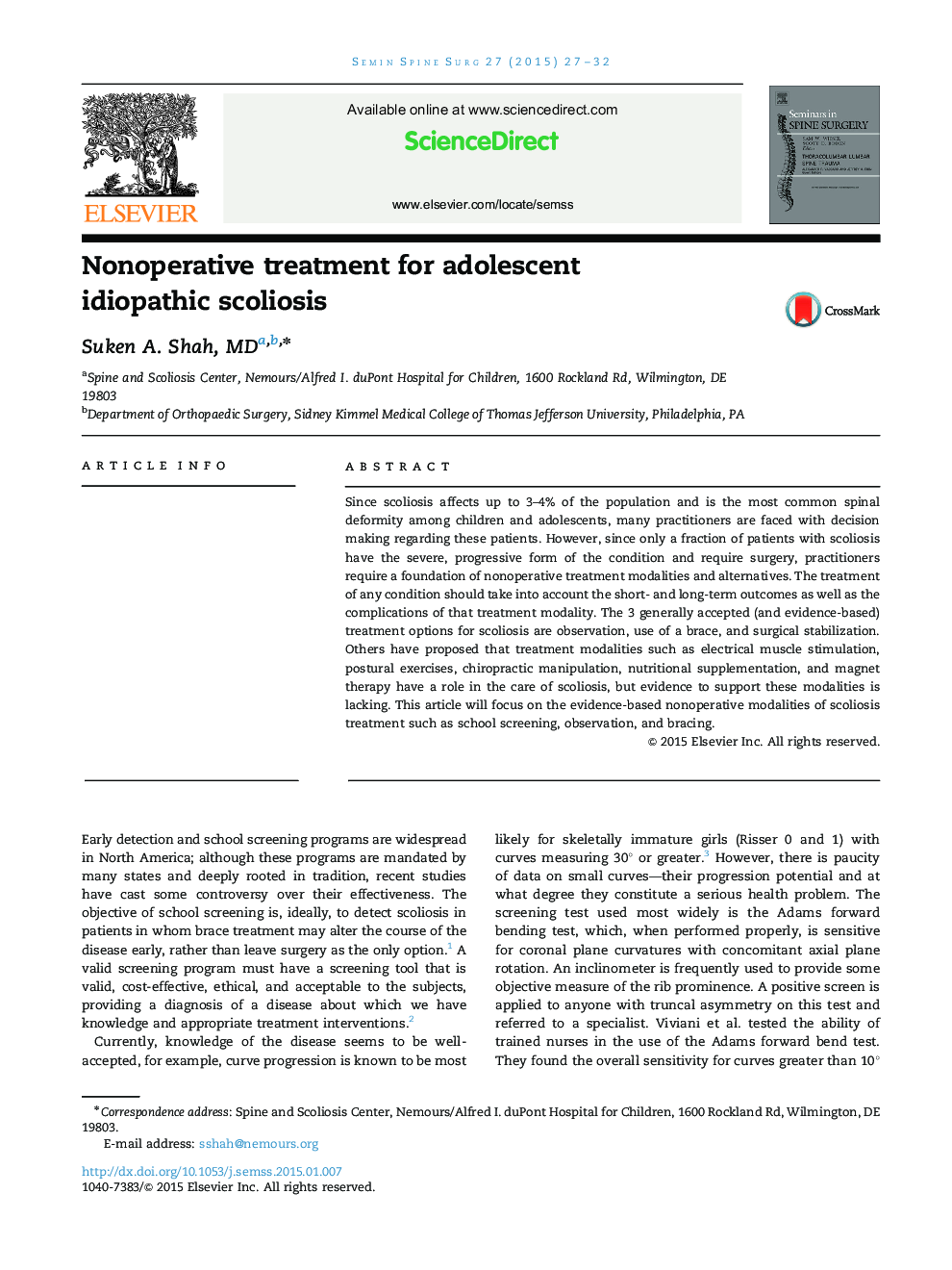| Article ID | Journal | Published Year | Pages | File Type |
|---|---|---|---|---|
| 4094530 | Seminars in Spine Surgery | 2015 | 6 Pages |
Since scoliosis affects up to 3–4% of the population and is the most common spinal deformity among children and adolescents, many practitioners are faced with decision making regarding these patients. However, since only a fraction of patients with scoliosis have the severe, progressive form of the condition and require surgery, practitioners require a foundation of nonoperative treatment modalities and alternatives. The treatment of any condition should take into account the short- and long-term outcomes as well as the complications of that treatment modality. The 3 generally accepted (and evidence-based) treatment options for scoliosis are observation, use of a brace, and surgical stabilization. Others have proposed that treatment modalities such as electrical muscle stimulation, postural exercises, chiropractic manipulation, nutritional supplementation, and magnet therapy have a role in the care of scoliosis, but evidence to support these modalities is lacking. This article will focus on the evidence-based nonoperative modalities of scoliosis treatment such as school screening, observation, and bracing.
